Learn how to make fermented buckwheat bread that uses no starter and is also gluten-free and sugar-free.
One of the greatest things I discovered after adopting plant-based diet was raw buckwheat – you can make boiled porridge, raw buckwheat porridge or ricotta, ricotta creams for cakes or to eat as is; to make cookies and pancakes, use soaked groats for buckwheat muffins and cakes, just boil for side or make patties, and even make yeast-free fermented buckwheat bread.
How to Make Fermented Buckwheat Bread
What is Buckwheat?
Buckwheat spread to Europe and Russia in the 14th and the 15th century from China, and the Dutch brought it to USA in the 17th century. Many of you might not know that buckwheat is actually not a grain, but a fruit seed related to rhubarb and sorrel and therefore is gluten-free and safe for those with celiac disease.
Buckwheat consists mainly of carbohydrates, but like seeds, it is also high in protein. Buckwheat is a very good source of manganese and a good source of magnesium, dietary fibre, copper, and phosphorus. Furthermore, it contains health-promoting flavonoids rutin and querceitin. Rutin functions with vitamin C to maintain healthy capillaries, to help heal wounds, to help form collagen in connective tissue, and to support a healthy immune system. Quercetin has antioxidant and anti-inflammatory effects.
Buckwheat groats have low glycemic index, meaning that unlike wheat flour, its carbohydrates break down slower, which make them more filling for a longer period of time, with less of an undesirable impact on blood glucose and insulin. Buckwheat groat protein also has a better structure than wheat protein, which has a poor amount of the amino acid lysine, with twice the amount of fibre compared to wheat.
The Ingredients
This fermented buckwheat bread consists of very simple wholesome ingredients.
The main component is raw buckwheat groats i.e., not roasted buckwheat.
Then, for flavour, we’re using Himalayan salt and oregano.
Finally, let’s add some sunflower seeds. However, you can use any seeds of preference or, for a leaner version, discard them altogether.
The Process
Start by soaking raw buckwheat groats overnight or at least for 2 hours. It’s very important to rinse the soaked groats well (they get slimy after soaking) and then let drain for at least 5 minutes to get the extra water out. If you don’t follow this step with scrutiny, your batter may end up too runny and the bread won’t rise.
Next, place the drained buckwheat groats into blender with 290 ml of water. Blend on low speed until smooth batter forms.
Then, pour the batter into plastic or glass bowl (do not use metal bowl). Cover the bowl with clean cloth and place into a warm oven (35°C, 95°F).
Now it’s down to letting the batter ferment for 7 hours. After 7 hours you’ll see that the batter has risen and small bubbles have formed. If you don’t see that, let it ferment a bit longer.
Then, add all the other ingredients to this buckwheat bread recipe and gently and briefly stir with wooden or plastic spoon (do not use metal spoon). Do not over-mix as the batter will lose its fluffiness.
Pour the batter into a loaf pan lined with parchment paper. By the way, you can put the bread back into warm (not hot!) oven and let it rise for another few hours or you can bake it immediately for 1 hour at 175°C (350°F).
NB! Let the bread be in the oven while it warms up and DO NOT use speed heating or fan! Count the hour from when the oven has reached the right temperature. I put the timer to 1 hour and 10 minutes as it takes 10 minutes to reach 175°C (350°F).
If you used parchment paper, you can remove the bread from pan immediately and place it on folded kitchen paper (I use four layers) to absorb the moistness. Let the bread cool for at least 30 minutes before slicing (the longer the better).
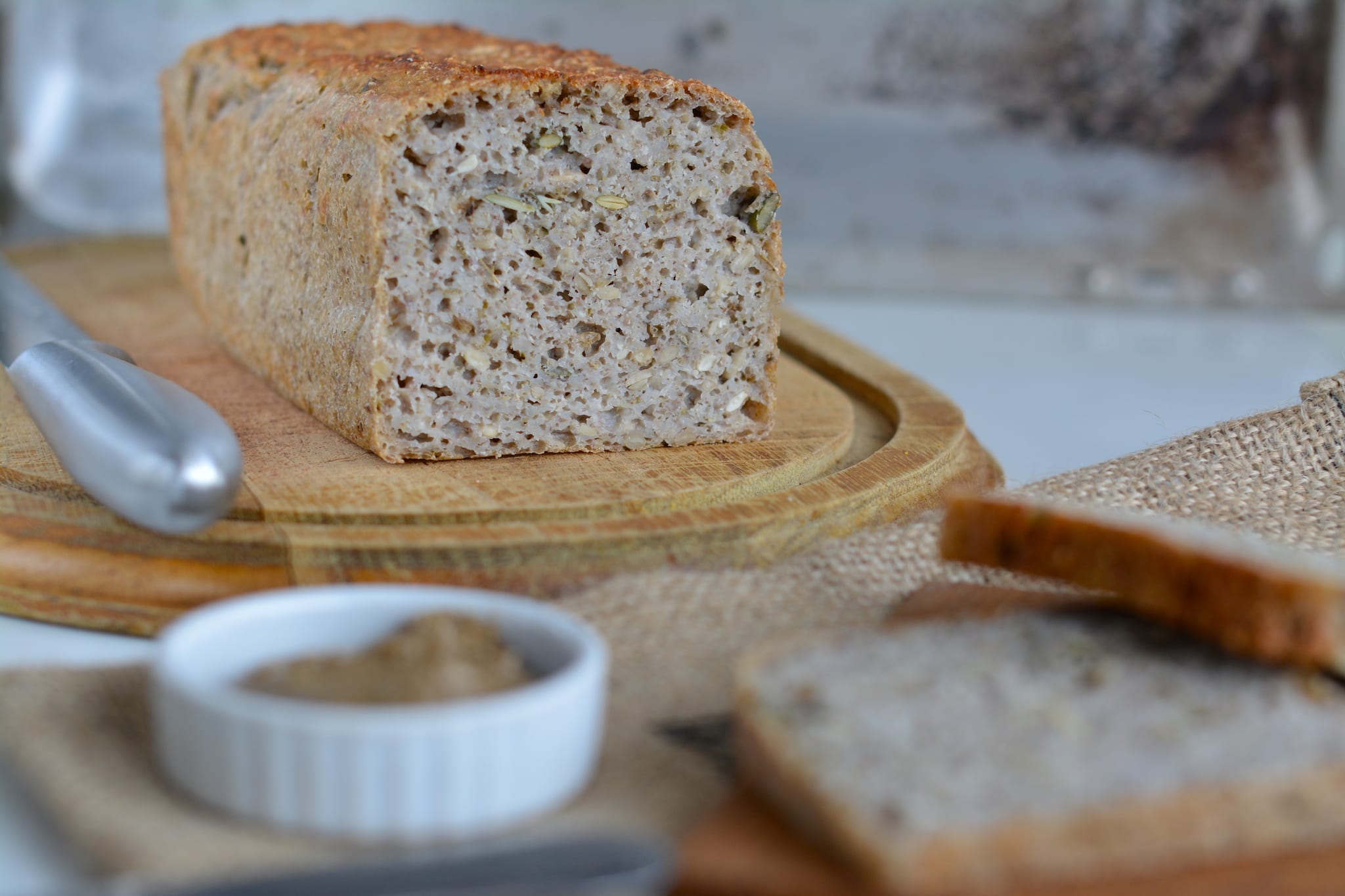
How to Serve
In my experience, freshly baked sourdough bread is so damn good that you don’t even need anything to accompany it with. However, should you disagree, here are some ideas:
Spread the bread with homemade hummus, avocado, nut or seed butter (tahini, almond butter, peanut butter, cashew butter), homemade applesauce, hummus, homemade vegan mayonnaise, or even sweet buckwheat ricotta.
In addition, top it with red cabbage coleslaw, sauerkraut, kimchi, tofu or tempeh slices, or vegan egg salad.
You can use a few or many of the options mentioned above and build an epic healthy vegan sandwich. On the photo below I used avocado spread, fermented tofu, kimchi and broccoli sprouts for delicious toasts.
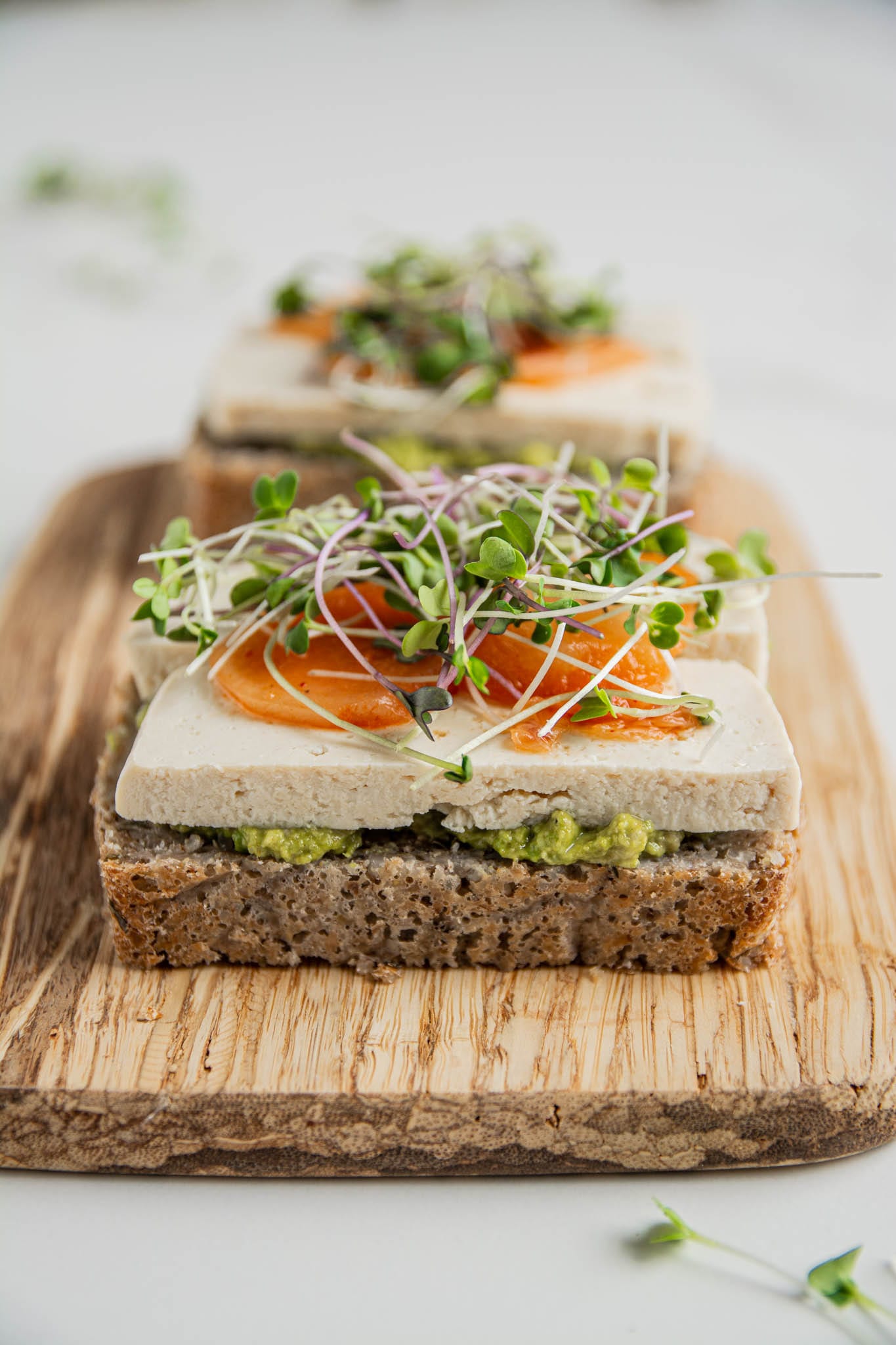
How to Store
When the bread is cooled, wrap it into a clean kitchen towel and stick it into a plastic bag to prevent losing too much moisture. It keeps well on countertop for 2 days.
For longer keeping, slice the bread up as soon as it’s cooled and store the individual slices in freezer. Heat them up in a microwave (for soft result) or in oven or toaster (for crunchy slices).
In order to toast the frozen sourdough bread slices in the oven, place them onto the rack (not on a baking sheet), set the oven to fast heat function (175°C, 350°F is enough) and timer to 10 minutes. When the time’s up, you’ll have fresh and crispy bread ready to enjoy.
I have made fermented buckwheat bread for two years now. I was a bit tired of rye bread and thought that it should be possible to ferment buckwheat as well. So, I started to search online (not to invent a wheel) and found a recipe by Concious Catering. After playing with the quantities and ingredients I developed my own favourite fermented buckwheat bread recipe.
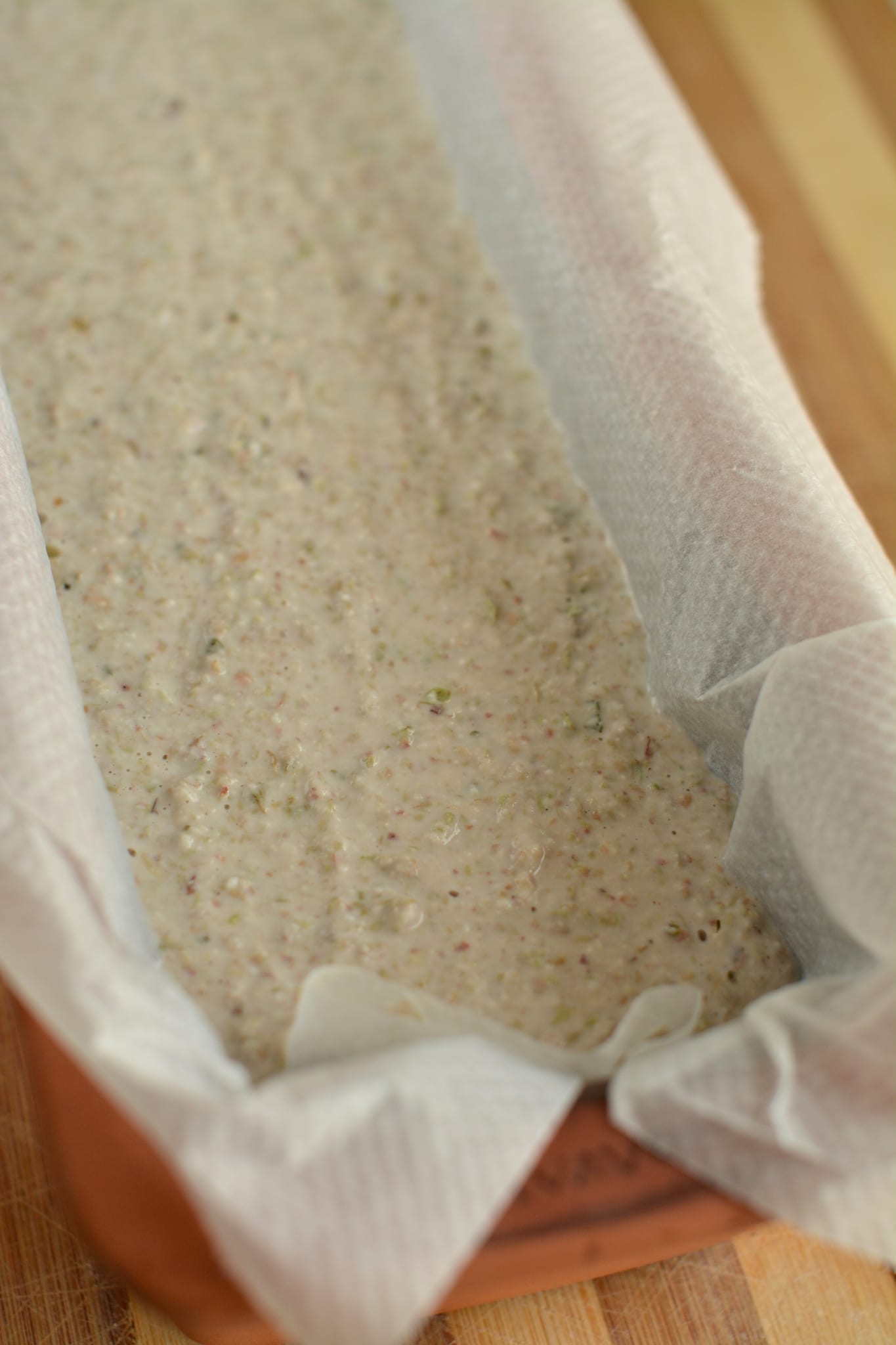
Make sure to watch the below video for visuals!
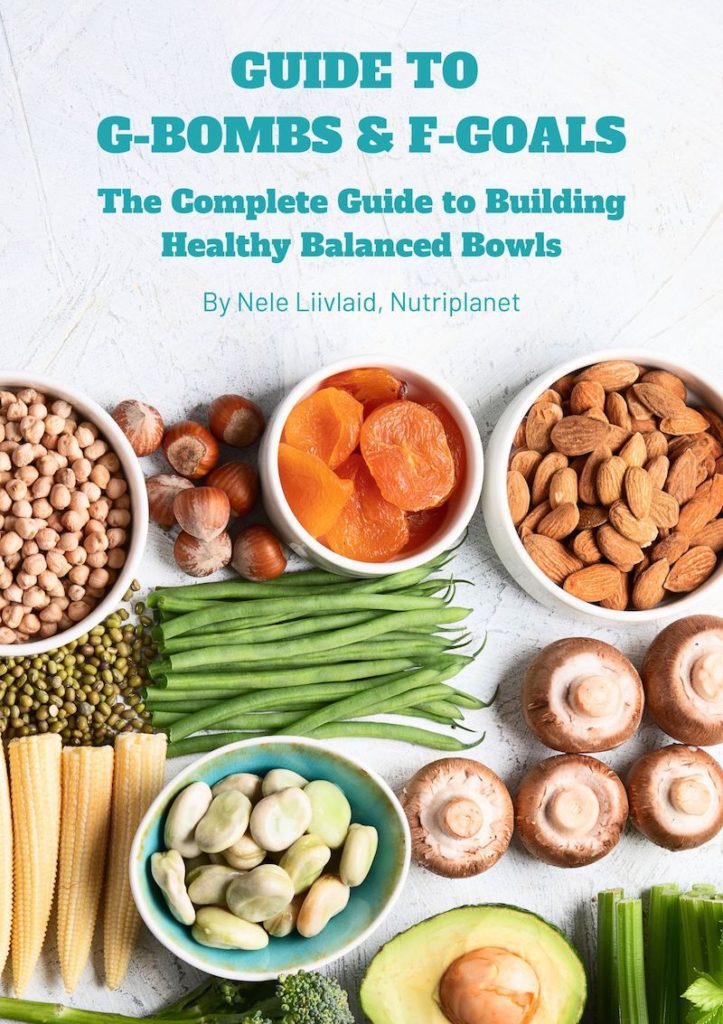
Step-by-step visual guide to building your own balanced bowls.
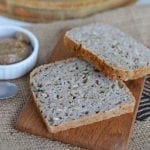
Fermented Buckwheat Bread Recipe
- Total Time: 1 hour 10 minutes
- Yield: 22 slices 1x
- Diet: Vegan
Description
Learn how to make fermented buckwheat bread that uses no starter and is also gluten-free and sugar-free.
Ingredients
- 425g (15oz) raw buckwheat groats
- 290ml or grams of water (10.2oz) + water for soaking buckwheat
- ½ tsp. Himalayan salt
- 2 tbsps. oregano
- 3 tbsps. of sunflower seeds
Instructions
- Soak buckwheat groats for at least 6 hours. It’s very important to rinse the soaked groats well (they get slimy after soaking) and let drain for at least 5 minutes to get the extra water out. If you don’t follow this step with scrutiny, your batter may end up too runny and the bread won’t rise.
- Place drained buckwheat groats into blender with 290ml of water. Blend on low speed until smooth batter forms.
- Pour the batter into plastic or glass bowl (do not use metal bowl). Cover the bowl with clean cloth and place into a warm oven (35°C, 95°F).
- Let the batter ferment for 7 hours. After 7 hours you’ll see that the batter has risen and small bubbles have formed. If you don’t see that, let it ferment a bit longer. Now add all the other ingredients to this buckwheat bread recipe, gently and briefly stir with wooden or plastic spoon (do not use metal spoon). Do not over-mix as the batter will lose its fluffiness.
- Pour the batter into a loaf pan lined with parchment paper. Now, you can put the bread back into warm (not hot!) oven and let it rise for another few hours or you can bake it immediately for 1 hour at 175°C (350°F). Let the bread be in the oven while it warms up. Count the hour from when the oven has reached the right temperature.
- If you used parchment paper, you can remove the bread from pan immediately and place it on folded kitchen paper (I use four layers) to absorb the moistness. Let the bread cool for at least 30 minutes before slicing (the longer the better).
Notes
One slice has 7.3 GL points.
- Prep Time: 10 minutes
- Cook Time: 1 hour
- Method: Baking
Nutrition
- Serving Size: 45g (1.6oz) slice (1/22 of recipe)
- Calories: 69.3 kcal
- Sodium: 26mg
- Fat: 1.07g
- Carbohydrates: 11.7g
- Fiber: 1.24g
- Protein: 2.58g
Zinc is an essential mineral that supports the immune system, digestive system, cellular growth and development, and more. This certified organic, liquid formula contains zinc derived from guava leaves, enhanced with Energized Trace Minerals for increased bioavailability.
Other combinations for flavouring:
- Olives and oregano
- Sundried tomatoes and oregano
- Sesame seeds and oregano
- Walnuts, prunes, cinnamon
- Sunflower seeds, pumpkin seeds, oregano
- Raisins, cinnamon
- Poppy seeds, goji berries
Tips on this fermented buckwheat bread:
- If you can’t set your oven to such low temperatures, ferment the bread batter at room temperature. I’d still recommend putting the bowl into oven for the most stable environment (less temperature changes or breeze). It’ll take about 16-24 hours.
- It is at its best when fresh.
- Slice the leftover bread and store in freezer. Heat up in the oven or toast slices whenever needed.
- Eat as it is or with hummus, guacamole or nut/seed spread for example.
- Should you like more sour taste, ferment the batter for longer.
Disclosure: this post contains affiliate links. As an Amazon Associate and Global Healing affiliate I earn from qualifying purchases. For every purchase made from the links in this post, you’ll be able to support my work. So you can look after your health, and contribute to my mission at the same time. Thank you!
Feel free to PIN the below image!
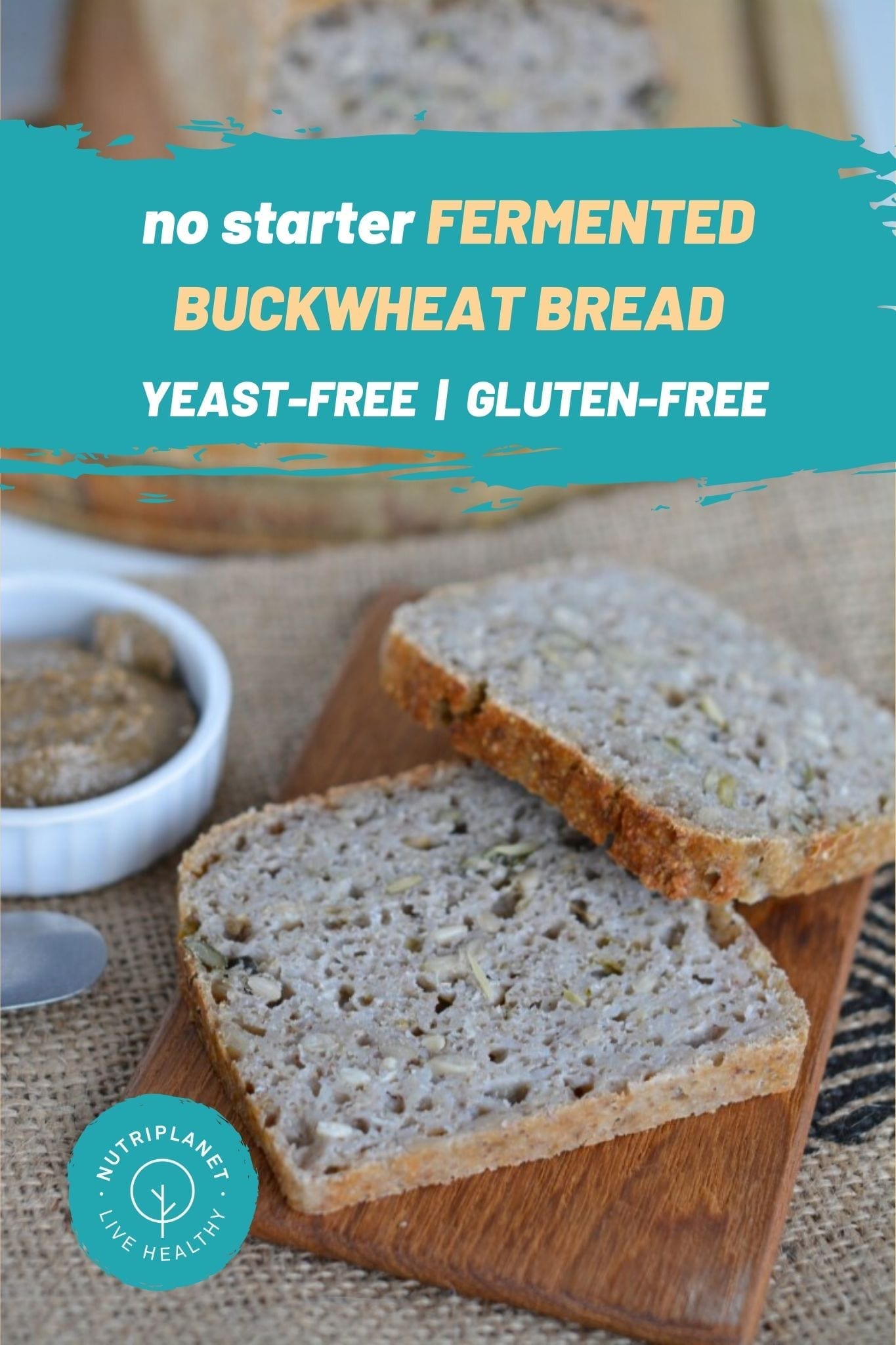
This post is also available in: Spanish

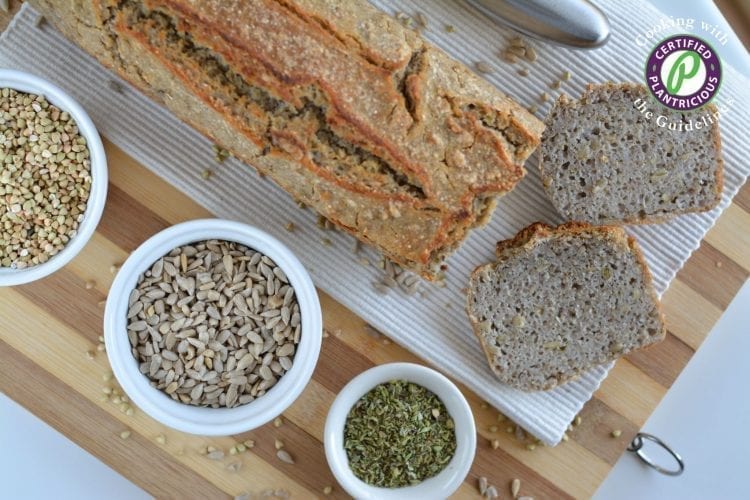
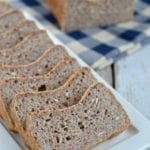
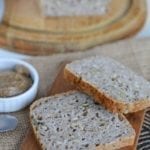
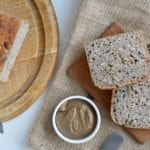











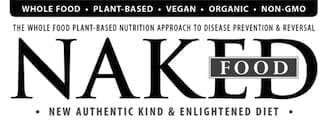




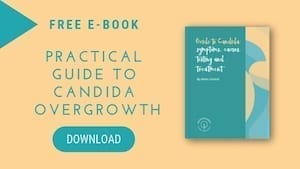

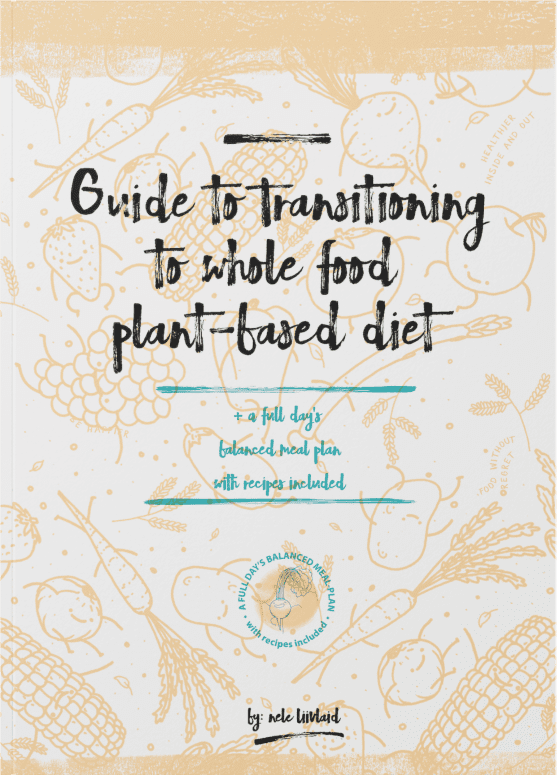
Hello, do you think the bread would still ferment and work if I just used buckwheat flour? Thx
Hi Natalie!
As long as you use raw buckwheat flour it should work. As groats absorb water, the quantities would be different. I’d say 425 grams flour and 530 grams water. Let me know how it turned out!
Natalie, did you try it? I only have a vitamix and I’m thinking this blend would be really hard to get out of canister so am curious about the flour myself.
Hi Kim!
No, it’s not hard to get the batter out of the canister at all! I always used my Kenwood blender and it worked fine. Now I prefer a bowl and immersion blender actually.
I have a cheap hand immersion blender – that’s sufficient? would be great. The Vitamix do not have a removable jar, so anything gooey has a huge loss and frustration rate. I was super excited to try this tomorrow and just realized I don’t have a bread pan. I apparently have never baked anything in my life. would a 2″ tall pyrex glass dish work? am I asking for a dangerous expanding muffin top?
Hi again Kim!
I think your immersion blender would work fine as the mixture is not super thick (as you can see from the video). The glass dish would work, but use parchment paper as well. Take any dish that is suitable for oven and that fits the batter as the bread won’t expand much in the oven.
Hi!! I’m finally making it – just soaked. And my oven has a minimum temp of 170F! 🙁 not sure what to do.
Hi Kim!
Ferment at room temperature! It’ll just take longer — 15-18 hours.
Thanks! Giving it a shot. It’s been at least 14 hours and no bubbles yet.. I have to go to work. I wonder if I should put it in the fridge? Hard to time out something with such a long process.
Definitely leave it at room temperature. The fermentation process would stop in fridge. If your room temperature is rather cool, it can take even up to 20-24 hours.
Thanks for your support! It was a moderate success. It took about 20 hours. I don’t think I blended the original buckwheat enough. It cooked but it’s heavy as a brick and seems like it may be wet but it’s actually not- if that makes any sense? All in all it’s a success. I need to do a better job of seasoning and try it again. I didn’t season much because I wanted the option of going sweet or savory with toppings, but without seasoning it really did just taste like buckwheat. and a lot of it. One slice is a meal 🙂 I think I actually like fermenting out of the oven- gave more flexibility to my schedule. I’m excited to try some variations. Thanks again.
Hi Kim!
I can’t think what went wrong there! If you compare your batter and its consistency to mine (in the video), was it very different? Are you sure you used unroasted (raw) buckwheat? I’m asking because it shouldn’t have any specific taste (like roasted buckwheat does). I also use only Himalayan salt and oregano to season and it tastes very good!
Let me know!
I have the same issue with my oven, so I heat up the oven to about 110/125 F and then shut it off. I did this maybe 4 or 5 times over the course of about 13 hours and it fermented spectacularly. 🙂
this looks great!!
I happen to have sprouting buckwheat at the moment, but I a sprouted whole 500g bag. I guess after soaking and sprouting they change their weight. how many sprouted buckwheat cups would you say I need for the bread? thanks a lot!
Hi!
Thanks!
The recipe requires 425 grams raw buckwheat groats. If you sprouted 500 grams, you only have 75 grams more, which is about 18%. So, you should also multiply the quantity of water with 1.18, i.e. 300*1.18=354 grams. Same goes for other ingredients and you’re good to go!
Have a great Sunday!
Did not work for me. Followed recipe. Bubbled and fermented. But end result was a dense brick inedible loaf that went in the trash.
Hi Jamie,
That is most peculiar… For me it has worked every time — I also know many people who have made the bread for years now. Maybe you can describe exactly what you did, so that we could get to the bottom of this?
All the best!
I soaked groats 7 hrs, rinsed and drained, blender with 10oz water, into a glass bowl covered with plastic wrap, fermented for 8 hrs with lots of tiny bubbles, folded additional ingredients with plastic spoon, loaf pan with parchment paper, baked for 1hr at 350. All I know is that my loaf, although done, was like a brick. I did not over mix. I still had lots of bubbles after putting in the pan to bake. I so wanted this to work.
Hi Jamie,
425 grams (15oz) raw buckwheat groats and 300 grams/ml (10.6oz) water. 10 oz is 284 grams, so a bit more water is necessary. The bread is crusty, but soft inside. The batter is pourable before and after fermentation, so I really can’t imagine what would cause it to harden that much. Make sure that the ventilator of the oven is not turned on. Although, this would just burn the bread on top and not make it brick like.
I wish I could be more of help 🙂 I plan to produce a making-of video of this recipe, so I’m sure this would make things clearer.
Hi Nele,
My oven doesn’t go down to 86F. It can go to 200F or “Warm.” Do you think if I preheat it to 200 and then turn it off that would work?
Thanks!
Hi Mary,
I wouldn’t try that because it might be too hot and then the batter would not ferment. If you are sure it’s only warm (around 100F), then go ahead. Alternatively, you can also ferment it at room temperature — it just takes longer, about 24 hours.
All the best!